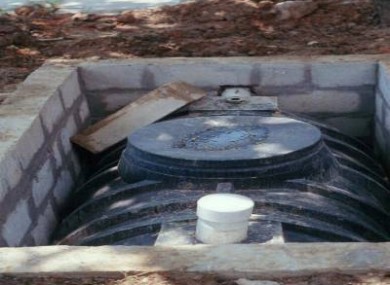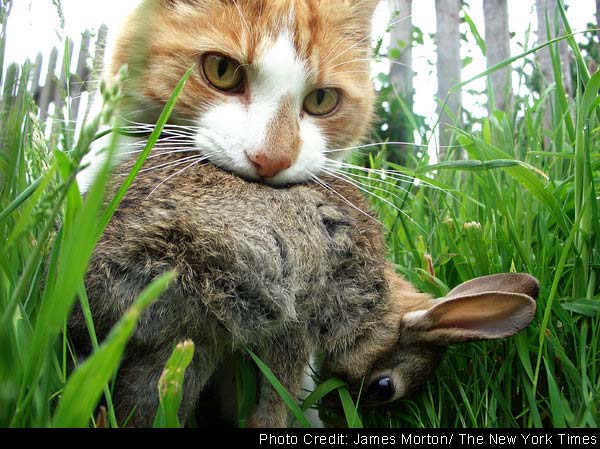Irish home-owners to be hit with water charge based on the size of their house


Irish homeowners face the controversial prospect of paying for their water based on the size of their home, rather than their estimated usage.
People with bigger houses face paying a higher temporary water charge than those with smaller homes from next year.
The Irish Independent has now learnt an “assessed charge” – which will have to be paid until water meters are installed – is likely to be based on the physical size of a home, rather than the number of people in it.
Sources involved in establishing the water tax say this is because it will be “impossible to police” the number of people living in a home, and it said “it is moving the way of property type”.
The charge could be as much as €400 a year, but “nobody will pay a flat rate”, one source said. Information on properties – and the initial tax to be paid – could be gleaned from databases that exist from the €100 household charge and the property tax, once it has been fully established from this summer.
Irish Water, the new body set up to collect the charges, will have access to records held by the Revenue Commissioners and the Local Government Management Agency.
However, the exact cost of the assessed charge and water metering will be decided independently by the Commission for Energy Regulation.
The bailout agreement with the troika compels the Government to bring in water charges next year. But the process of installing the meters only gets under way this summer, and will not be complete for three years.
To meet the terms of the bailout, the Government will have to bring in the assessed charge – but sources say this will almost certainly be pushed back until after the local elections, not scheduled to take place until mid-2014.
“It is a matter for the Government to decide the date it will be introduced,” one source said.
It is hoped as many as 500,000 meters will be installed by the summer of 2014.
The Irish Independent has also learnt a “lead-in time” for metering is being considered.
Under this proposal, being discussed in the Department of the Environment, homeowners will be able to monitor their water usage on a meter for a few months before paying the metered charge.
“That way, people could see what they’d be paying, and might be shocked by their bills,” a source said.
Irish Water will also be allowed access to the Department of Social Protection records, and it is understood certain welfare recipients, as well as people with acute medical needs, will not pay the full amount of the charge.
And it is now thought apartment blocks complexes will have one meter installed which will measure the usage of all occupants in the complexes and then the charges will be divided up by apartment.
Over 64% of Irish properties have registered their septic tanks

About 64% of Irish properties have registered their septic tanks.
With the deadline for registering looming the vast majority of the county’s estimated 6,922 septic tanks have been registered and the Minister for Environment, Community and Local Government, Phil Hogan, expects even more to finalise their registration by February 1, 2013.
72% of Co Leitrim residents living in properties served by a septic tank have registered their waste disposal systems. Neighbouring counties have returned similarly high registration rates with compliance running at 73.3 percent in Co Cavan; 70.3 percent in Co Sligo and 67 percent in Co Longford. However, Co Donegal has returned quite low registration rates like the household tax with just 49.3 percent an estimated 32,359 households served by septic tanks paying the charge.
Co Kerry has the highest rate of compliance with 90.6 percent of properties registering their septic tanks while Dublin city has the lowest with just 88 of homeowners (that’s just 4.7%) actually registering for the charge.
Fianna Fáil Spokesperson on Agriculture Éamon Ó Cuív has called for an extension of the registration deadline.
“The Minister has imposed a deadline of February 1 st for septic tank registration. In my view it is completely unfair of the Minister to force the hand of septic tank owners in this way while so much confusion remains about the legislation and the inspection standards in particular. I and my party have appealed to Minister Hogan extend the registration deadline to end of April so that the new inspection standards can be published and scrutinised in full.”
Deputy Ó Cuív welcomed the fact the Government had made the grant aid available but said the €4,000 cap was disappointing in light of the actual costs of upgrading systems.
Ireland’s live register in December 2012 at 430,100; Jobless rate still at 14.6%
Irish Economy: The standardised unemployment rate (SUR) in January 2013 was 14.6%, unchanged from December 2012, the CSO said today. The seasonally adjusted unemployment rate from the most recent Quarterly National Household Survey (QNHS) was 14.8% in the third quarter of 2012. On a seasonally adjusted basis the Live Register total recorded a monthly decrease of 900 in January 2013, bringing the seasonally adjusted total to 430,100.
In unadjusted terms there were 429,396 people signing on the Live Register in January 2013. This represents an annual decrease of 10,193 (-2.3%).
Other features include: On a seasonally adjusted basis the Live Register showed a monthly decrease of 1,500 males in January 2013, while females increased by 600 over the same period. The number of male claimants decreased by 10,266 (-3.6%) to 273,627 over the year and female claimants increased slightly by 73 to 155,769. This compares with a decrease of 8,110 (-2.8%) to 283,893 for males and an increase of 5,022 (+3.3%) to 155,696 for females in the year to January 2012.
The CSO says Live Register is not designed to measure unemployment. It includes part-time workers (those who work up to three days a week), seasonal and casual workers entitled to Jobseeker’s Benefit or Allowance. Unemployment is measured by the Quarterly National Household Survey and the latest estimated number of persons unemployed as of the third quarter of 2012 was 324,500.
Live Register duration of continuous registration: The number of long term claimants (12 months or more continuous unemployment) on the Live Register in January 2013 was 189,857. The number of male long term claimants increased by 922 (+0.7%) in the year to January 2013, while the comparable increase for females was 5,086 (+10.0%) giving an overall annual increase of 6,008 (+3.3%) in the number of long term claimants.
In January 55.8% (239,539) of all claimants on the Live Register were short term claimants. The comparable figure for January 2012 was 58.2% (255,740). The annual fall of 16,201 (-6.3%) in the number of short term claimants consisted of a decrease of 11,188 (-7.4%) in the number of male short term claimants and a decrease of 5,013 (-4.8%) in female short term claimants.
Live Register casual and part-time workers: There were 87,924 casual and part-time workers on the Live Register in January, which represents 20.5% of the total Live Register. This compares with 19.8% one year earlier when there were 87,029 casual and part-time workers on the Live Register. In the year to January 2013 the number of casual and part-time workers increased by 895 (+1.0%), with the number of males increasing by 1,573 (+3.4%) and the number of females decreasing by 678 (-1.7%).
Live Register age groups: In the year to January 2013 the number of persons aged 25 and over on the Live Register decreased by 3,212 (-0.9%), and the number of persons aged under 25 decreased by 6,981 (-9.3%). Annual decreases in persons aged under 25 have occurred in all months since July 2010. The percentage of persons aged under 25 on the Live Register now stands at 15.9% for January 2013, down from 17.1% in January 2012 and 18.6% in January 2011.
Live Register new registrants: There were 37,516 new registrants on the Live Register in January 2013, consisting of 18,781 JB (job benefit) claims, 16,811 JA 9job allowance) claims and 1,924 ‘Other Registrants’. Males accounted for 54.9% (20,579) and females 45.1% (16,937) of all new registrants. On average 5,145 male and 4,234 female new registrants joined the Live Register each week of the month. The difference between the number of new registrants on the Live Register and the change in the total number on the Live Register is accounted for by closed claims and movements between schemes.
Irish food and drink mergers and acquisitions (M&A) activity up 32% last year
Irish food companies must continue to invest in ensuring a robust and safe supply chain, new report urges
The value of mergers and acquisitions in the Irish food and beverage sector rose by 32% to a total of €726m last year, a new report shows.
The report, from Grant Thornton, said that US companies are increasingly interested in investing in high quality Irish food and drink companies with strong brands and authentic products.
US acquisitions of Irish businesses last year included Hain Celestial’s €10m deal for Cork based Cully & Sully, while whiskey giant Beam completed its purchase of Cooley Distillery in January 2012.
Irish firms were also major investors in the US last year, with Kerry Group, Glanbia, Greencore and C&C all announcing major deals. The report noted that C&C’s €235m acquisition of the Vermont Hard Cider company was the biggest Irish deal in the US last year.
Grant Thornton also said that Asia is becoming a growing market for Irish food products, with exports up 25% on last year. ”Cash-rich Asian companies are potential investors in Irish food businesses whose operations may be thriving, but where balance sheets are stretched by ill-judged property investments made in the boom,” commented Ciara Jackson, head of food at Grant Thornton.
Today’s report says that Irish food companies must continue to invest in ensuring a robust and safe supply chain in order to protect the reputation of an industry that has contributed billions in exports last year.
Ms Jackson said the recent horse meat controversy is a cause of concern, adding that the reputation of Irish produce has its foundation in high standards of regulation and food safety, and the country’s natural green environment.
”It is vital that the industry collaborates to create a resilient supply chain that can minimise costs whilst ensuring Irish produce maintains its international standing,” she added.
If you want to shed weight, Could an earlier lunchtime help?


Want to lose weight? Eating lunch earlier rather than later may help you out.
Dieters who ate early lunches tended to lose more weight than those who had their midday meal on the later side, according to a Spanish study published in the International Journal of Obesity.
The finding doesn’t prove that bumping up your lunch hour will help you shed that extra weight, but it is possible that eating times play a role in how the body regulates its weight, researchers said.
“We should now seriously start to consider the timing of food – not just what we eat, but also when we eat,” said study co-author Frank Scheer, from Brigham and Women’s Hospital and Harvard Medical School in Boston.
His group’s research included 420 people attending nutrition clinics in southeast Spain. Along with going to regular group therapy sessions with nutrition and exercise counseling, dieters measured, weighed and recorded their food and reported on their daily physical activity.
Study participants were on a so-called Mediterranean diet, in which about 40 percent of each day’s calories are consumed at lunch. About half of the people said they ate lunch before 3:00 p.m. and half after.
Over 20 weeks of counseling, early and late lunchers ate a similar amount of food, based on their food journals, and burned a similar amount of calories through daily activities.
However, early eaters lost an average of 10 kilograms ( 22 lbs) – just over 11 percent of their starting weight – while late eaters dropped 7.7 kg (17 lb), or nine percent of their initial weight.
What time dieters ate breakfast or dinner wasn’t linked to their ultimate weight loss.
One limitation of the study is that the researchers didn’t randomly assign people to eat early or late, so it’s possible there were other underlying differences between dieters with different mealtimes. Certain gene variants that have been linked to obesity were more common in late lunchers, for example.
People who eat later may have extra food in their stomach when they go to sleep, which could mean more of it isn’t burned and ends up being stored as fat, said Yunsheng Ma, a nutrition researcher from the University of MassachusettsMedical School in Worcester.
How often people eat during the day and whether they bring food from home or eat out may also contribute to weight loss, added Ma, who wasn’t involved in the new research.
He said any implications of late eating could be exacerbated among people in the United States.
“The pattern of consumption of meals is very different in the U.S.,” Ma told Reuters Health. Many people skip breakfast or lunch, then end up overdoing it on calories at dinner.
Scheer said that in the United States, where dinner is typically the biggest meal, researchers would expect people who eat later dinners to have more trouble losing weight based on his team’s findings.
Regardless of exact mealtimes, Ma said it’s important for people to spread their calories out through the day.
“Have a good breakfast and a good lunch, and at dinner, people should eat lightly,” he said
Your cuddly pussy cat is deadlier than you think
For all the adorable images of cats that play the piano, flush the toilet, mew melodiously and find their way back home over hundreds of miles, scientists have identified a shocking new truth: cats are far deadlier than anyone realized.
In a report that scaled up local surveys and pilot studies to national dimensions, scientists from the Smithsonian Conservation Biology Institute and the Fish and Wildlife Service estimated that domestic cats in the United States — both the pet Fluffies that spend part of the day outdoors and the unnamed strays and ferals that never leave it — kill a median of 2.4 billion birds and 12.3 billion mammals a year, most of them native mammals like shrews, chipmunks and voles rather than introduced pests like the Norway rat.
The estimated kill rates are two to four times higher than mortality figures previously bandied about, and position the domestic cat as one of the single greatest human-linked threats to wildlife in the nation. More birds and mammals die at the mouths of cats, the report said, than from automobile strikes, pesticides and poisons, collisions with skyscrapers and windmills and other so-called anthropogenic causes.
Peter Marra of the Smithsonian Conservation Biology Institute and an author of the report, said the mortality figures that emerge from the new model “are shockingly high.”
“When we ran the model, we didn’t know what to expect,” said Dr. Marra, who performed the analysis with a colleague, Scott R. Loss, and Tom Will of the Fish and Wildlife Service. “We were absolutely stunned by the results.” The study appeared Tuesday in the journal Nature Communications.
The findings are the first serious estimate of just how much wildlife America’s vast population of free-roaming domestic cats manages to kill each year.
“We’ve been discussing this problem of cats and wildlife for years and years, and now we finally have some good science to start nailing down the numbers,” said George H. Fenwick, the president and chief executive of the American Bird Conservancy. “This is a great leap forward over the quality of research we had before.”
In devising their mathematical model, the researchers systematically sifted through the existing scientific literature on cat-wildlife interactions, eliminated studies in which the sample size was too small or the results too extreme, and then extracted and standardized the findings from the 21 most rigorous studies. The results admittedly come with wide ranges and uncertainties.
Nevertheless, the new report is likely to fuel the sometimes vitriolic debate between environmentalists who see free-roaming domestic cats as an invasive species — superpredators whose numbers are growing globally even as the songbirds and many other animals the cats prey on are in decline — and animal welfare advocates who are appalled by the millions of unwanted cats (and dogs) euthanized in animal shelters each year.
All concur that pet cats should not be allowed to prowl around the neighborhood at will, any more than should a pet dog, horse or potbellied pig, and that cat owners who insist their felines “deserve” a bit of freedom are being irresponsible and ultimately not very cat friendly. Through recent projects like Kitty Cams at the University of Georgia, in which cameras are attached to the collars of indoor-outdoor pet cats to track their activities, not only have cats been filmed preying on cardinals, frogs and field mice, they have also been shown lapping up antifreeze and sewer sludge, dodging under moving cars and sparring violently with much bigger dogs.
“We’ve put a lot of effort into trying to educate people that they should not let their cats outside, that it’s bad for the cats and can shorten the cats’ lives,” said Danielle Bays, the manager of the community cat programs at the Washington Humane Society.
Yet the new study estimates that free-roaming pets account for only about 29 percent of the birds and 11 percent of the mammals killed by domestic cats each year, and the real problem arises over how to manage the 80 million or so stray or feral cats that commit the bulk of the wildlife slaughter.
The Washington Humane Society and many other animal welfare organizations support the use of increasingly popular trap-neuter-return programs, in which unowned cats are caught, vaccinated, spayed and, if no home can be found for them, returned to the outdoor colony from which they came. Proponents see this approach as a humane alternative to large-scale euthanasia, and they insist that a colony of neutered cats can’t reproduce and thus will eventually disappear.
Conservationists say that, far from diminishing the population of unowned cats, trap and release programs may be making it worse, by encouraging people to abandon their pets to outdoor colonies that volunteers often keep lovingly fed.
“The number of free roaming cats is definitively growing,” Dr. Fenwick of the bird conservancy said. “It’s estimated that there are now more than 500 T.N.R. colonies in Austin alone.”
They are colonies of subsidized predators, he said, able to survive in far greater concentrations than do wild carnivores by dint of their people-pleasing appeal. “They’re not like coyotes, having to make their way in the world,” he said.
Yet even fed cats are profoundly tuned to the hunt, and when they see something flutter, they can’t help but move in for the kill. Dr. Fenwick argues that far more effort should be put into animal adoption. “For the great majority of healthy cats,” he said, “homes can be found.” Any outdoor colonies that remain should be enclosed, he said. “Cats don’t need to wander hundred of miles to be happy,” he said.





No comments:
Post a Comment